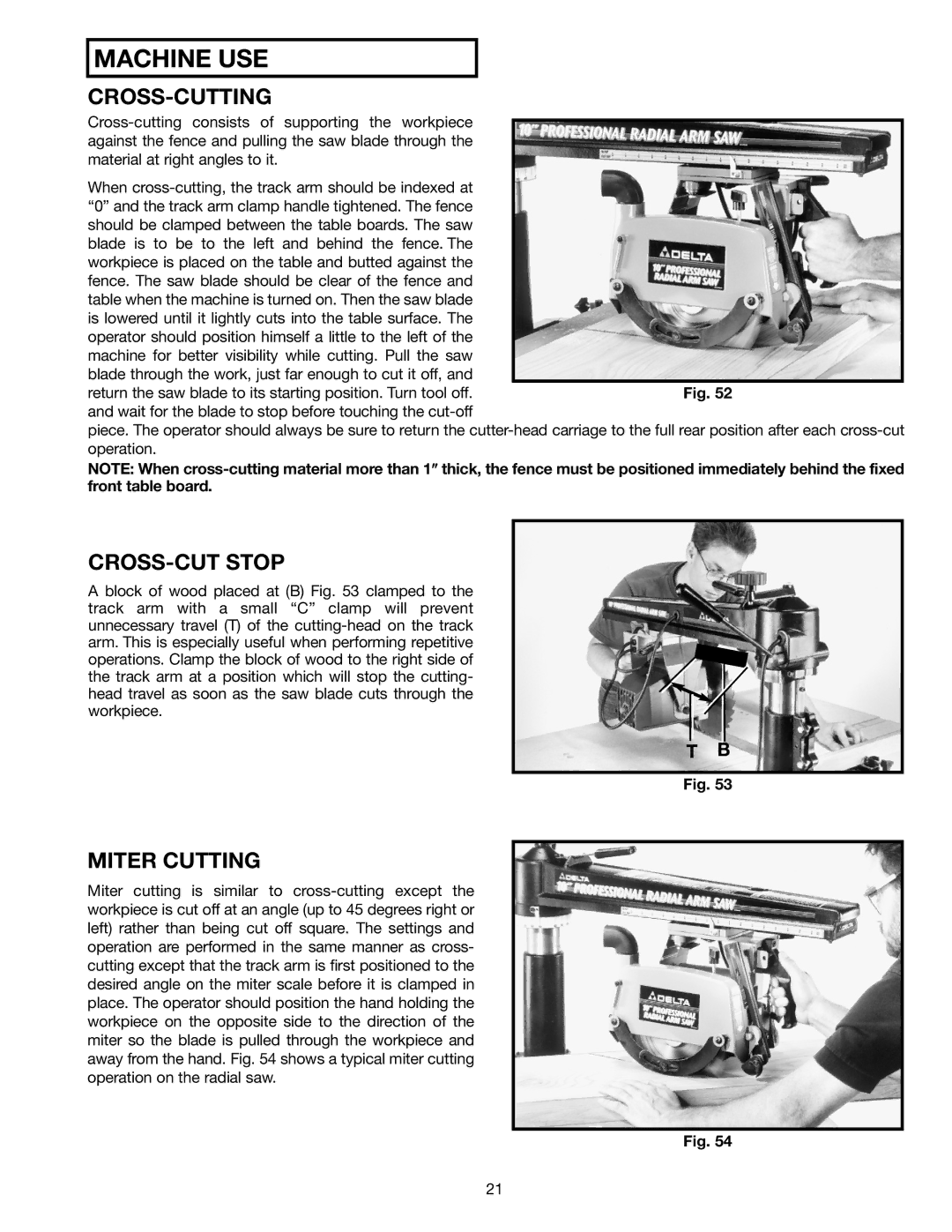Fig. 52
MACHINE USE
CROSS-CUTTING
Cross-cutting consists of supporting the workpiece against the fence and pulling the saw blade through the material at right angles to it.
When cross-cutting, the track arm should be indexed at “0” and the track arm clamp handle tightened. The fence should be clamped between the table boards. The saw blade is to be to the left and behind the fence. The workpiece is placed on the table and butted against the fence. The saw blade should be clear of the fence and table when the machine is turned on. Then the saw blade is lowered until it lightly cuts into the table surface. The operator should position himself a little to the left of the machine for better visibility while cutting. Pull the saw blade through the work, just far enough to cut it off, and return the saw blade to its starting position. Turn tool off. and wait for the blade to stop before touching the cut-off
piece. The operator should always be sure to return the cutter-head carriage to the full rear position after each cross-cut operation.
NOTE: When cross-cutting material more than 1″ thick, the fence must be positioned immediately behind the fixed front table board.
CROSS-CUT STOP
A block of wood placed at (B) Fig. 53 clamped to the track arm with a small “C” clamp will prevent unnecessary travel (T) of the cutting-head on the track arm. This is especially useful when performing repetitive operations. Clamp the block of wood to the right side of the track arm at a position which will stop the cutting- head travel as soon as the saw blade cuts through the workpiece.
MITER CUTTING
Miter cutting is similar to cross-cutting except the workpiece is cut off at an angle (up to 45 degrees right or left) rather than being cut off square. The settings and operation are performed in the same manner as cross- cutting except that the track arm is first positioned to the desired angle on the miter scale before it is clamped in place. The operator should position the hand holding the workpiece on the opposite side to the direction of the miter so the blade is pulled through the workpiece and away from the hand. Fig. 54 shows a typical miter cutting operation on the radial saw.

